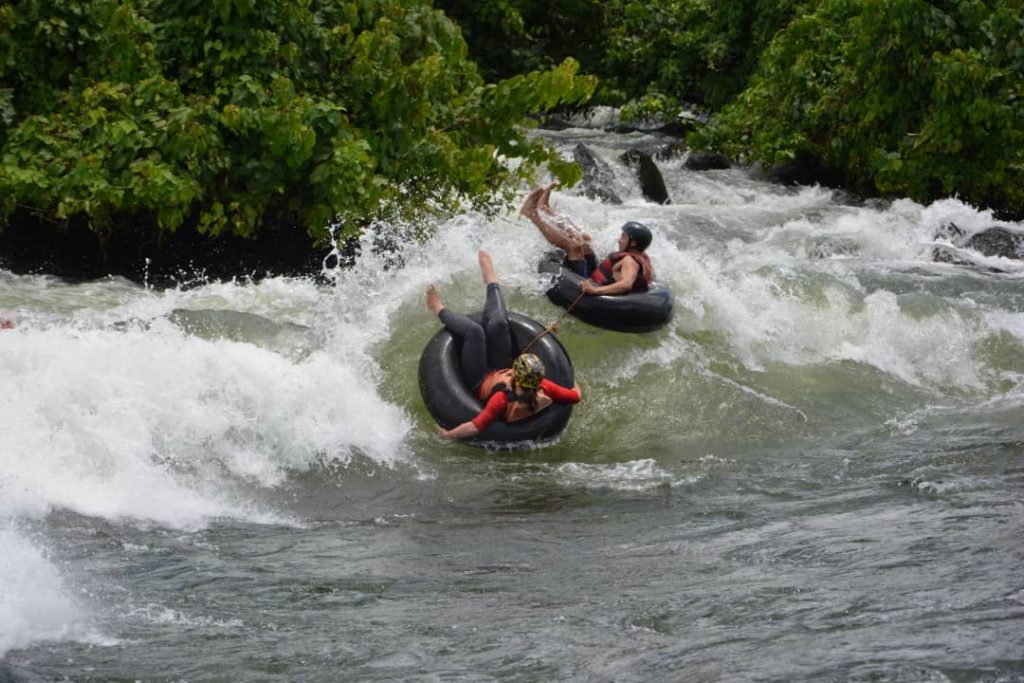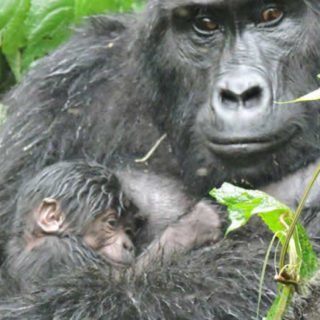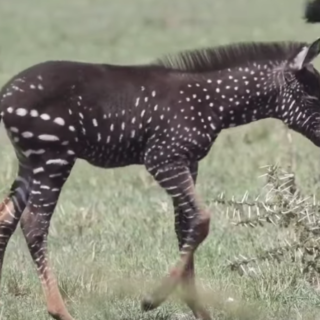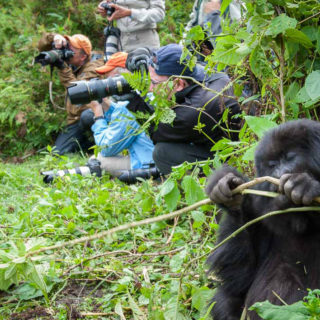Best Wild Activities | Top 10 Best Things to do in Uganda
Uganda is a thriving charismatic tourist destination that attained her independence in 1962 from the British as their protectorate with a diverse culture, landscape, flora and fauna.
Uganda was christened and published Pearl of Africa by Winston Churchill in 1908,” for magnificence, for the variety of form and color, for profusion of brilliant life- bird, insect, reptile, beast – for vast scale – Uganda is truly “the Pearl of Africa.”
Comparing to the past decades, Uganda has presently showed success and advancement in its security, stability and lifestyle for the exclusive interest in its affluent tourism industry.
Uganda is one of the rapidly growing African counties that are extensively majoring in industrialization and international peace relations. This aims on developing itself and her neighbors at large. Despite Uganda’s transitions, this has minimally interfered with its wealthy cultures, norms plus its wild flora and fauna.
All credit to the Ugandan government that has sensitized its nationals of the great importance and the probable drawbacks that come along with distorting the country’s wildlife and the all green scenic landscapes ranging from the low lush wetlands, spilling savanna, the tenebrous forests to the high upheaved ice capped mountains.
Uganda generally reclines on a hoisted basin which rises between the eastern and western arms of the Great Rift Valley, an average altitude of 1000m high with a relatively flat topography. Uganda is consummated with several mountains of varying formations some of which include the extinct volcanic Mt Elgon, the gracious snowcapped Mount Rwenzoris and the Volcanic Virunga ranges among others.
It is also bisected by the great Equator latitude line at 0°. This conspicuously proffers the reason for Uganda’s equatorial climate that is typified by the two major rainy seasons of the year between March and May and between September and November.
Apart from the northern dry areas, most parts of Uganda receive an average annual rainfall of 1000mm to 1500mm.This correspondingly leaves December to February as the hottest months with temperatures ranging from 25-29°C.
Uganda’s climate is also significantly influenced by its immense waters which include Africa’s largest fresh water body, Lake Victoria. This is shared by the three East African countries, Uganda Kenya and Tanzania. Other major water bodies include Lake Albert, Lake Edward, Lake George, and Lake Kyoga among others.
Besides that, Lake Victoria is undoubtedly the source of the Great Nile River that is the longest river in Africa. This travels 6500km from its source in Uganda to the Mediterranean Sea in Egypt. The Nile River predominantly supports farming with in all countries it flows through with large irrigation schemes spanning it.
It is also the largest source of hydro power used in Uganda for both industrialization and domestic use with local dams along the Nile River in Uganda producing an approximation 1,177 megawatts of electricity as of April 2019.
Road transport is by far the most dominant mode of transport used in Uganda carrying over 95% of passenger and freight traffic. The road network in Uganda comprises of 21,000km of national roads, 17,000km of district roads, 2,800km of urban roads and about 30,000km of community roads, all these connecting and coordinating communities, districts and cities of Uganda. This has extensively intensified the wide reach of Uganda’s scenic breathtaking tourist attractions in the remote.
Additionally, with the ever-growing Ugandan transport industry, the most picturesque quaint sceneries and terrains can now be set foot on using air flights as soon as you arrive at Entebbe International Airport, Uganda’s biggest airport. This is where you’ll set off to the various developing and secure airstrips and airfields that are just a stone’s throw to Uganda’s panoramic national parks.
Uganda has a catalogue of tremendous national parks and game reserves from which you can choose to make a safari of your life time in the Pearl of Africa. There are 10 national parks managed by the Uganda Wildlife Authority and with which every national park has something unique that stands out striking among others.
Tourists on safaris to these national parks take on countless activities in the wilderness that make such places home away from home.
Some of the best Things to do in Uganda include the following;
Camping
Outdoor camping and backpacking are some of the adventurous tours in Uganda’s countryside and national parks. Camping is one assuredly to feel the closer touch to nature’s gifts of birds, wild animals, insects, butterflies and the vegetation.
Camping in Uganda may not recommend you to simply set up solitary tents in the middle of nowhere, but rather urge you to restrict to established recognized and secure campsites. There are several established campsites in Uganda where prior booking is paramount for a better preparation and the best experience. Some these include;
- Lake Bunyonyi Overland Camp found in Kabale district in the western region of Uganda. This will give you one of the best birding experiences of your safari since the spanning environment of Lake Bunyonyi habits the world’s largest number of bird species.
- Bushara Island Camp that is spanned too by Lake bunyonyi. A camp site set on the rim of the volcanic crater lake in the lush Rwenzori foothills at Lake Nkuruba.
- Lake Chahafi Resort situated close to Kisoro town in the shadow of Mt Muhavura
- The crater valley where you can pitch your tent on the edges of Lake Mburo in western Uganda surrounded by shady forests, monkey species and birdlife
- The Hippo Hill Safari lodge that has luxury safari tents from where to view wild animals in queen Elizabeth national park in western Uganda
- Other campsites may include the kluge’s guest farm, Kibale Forest Camp, Kasenyi Safari Camp, the Sina Village, Gorilla Conservation Camp among others.
Outdoor camping tourists commonly move out for adventure and fun but happen to encounter some challenges. This triggers an alert that you should make sure you have the right camping gear and equipment for your camp trip in Uganda’s national parks and reserves.
Watch out for the best tents, hiking boots, warm and thick clothing, adequate supplies and drinking water, backpacks, sun hats and sun glasses. You also need to carry utensils, chairs, camping stoves, flash lights and sleeping bags, to mention but a few.
Finally, take caution to be friendly courteous to the locals in and around camping centers as these will be your immediate sources of help, company and ultimate information plus helping you in other domestic activities like fetching water, washing and taking you around the interesting places around the camps.
Gorilla trekking
Mgahinga national park and Bwindi Impenetrable national park are the best wondrous destinations for an unforgettable gorilla trekking safari tour in Uganda and Africa at large. These are distinctively known for their wide population of the endangered mountain gorillas since they habituate the world’s only surviving mountain gorillas.
Gorilla trekking goes to about 2hours, 4hours, or even a day depending on the gorilla location since they keep moving around the enormous forests in search for food. Due to the erratic time on the trek, gorilla trekking calls for adequate preparations and equipment like adequate food, drinks, warm clothing, torches, and proof-cameras among others.
Endeavor to be aware of the Gorilla trekking rules and regulations for the best gorilla trek experience. Some of the regulations include; Please always keep your voice low; DO NOT leave rubbish in the park; You will be taken to where the guides observed the gorillas the day before; When you approach the mountain gorillas, the guides will tell you to get ready.
More gorilla families have been habituated in the gorilla territories which brings the gorillas closer for trackers. Prior bookings for gorilla trekking permits with the Uganda wildlife authority are paramount; gorilla permits are priced at $600.
Hiking and Cultural trails
Hikes and trails are taken on different routes around the different national parks in Uganda. These give broader exposure to the parks’ game and landscape plus the exhilarating interactions with the natives of the park. Such people still hold the valued truth of their sumptuous culture and evolution.
While on such cultural trails, different sessions with the natives are organized where they showcase some of their talents in dance and arts craft. Some of the interesting trails include the Batwa trail with the pygmy people in western Uganda, the Nkuringo trail, and the Buhoma trail which is a biking trail to the Ivi river among others. These trails also give a gripping opportunity for birders.
Birding – Bird Watching Safaris
Uganda is gloriously recognized as a birding paradise for its harboring of over half of the world’s bird species with Bwindi Impenetrable National Park having the prime birding spots. The park has over 348 bird species recorded.
Another stunning birding locale in Uganda is Lake Bunyonyi, Africa’s second deepest lake that spans the Mgahinga Gorilla National Park. Lake Bunyonyi acquired its name from an aborigine word, “bunyonyi” which means birds. Dotted with 20 small islands revolved by steep terraced hills, it is a perfectly catchy spot for bird lovers.
Other stupendous birding sites in Uganda include; the swampy valleys of Miriti and the Warukiri plus the extensive areas of the salt licks in Lake Mburo National Park unique for the rare Red-faced Barbet; the Rwenzori Mountains having 217 species with the Rwenzori Turaco, the Long-eared Owl, the Bearded Vultures and the Black Eagles unique in the area; the Kasenyi area, the Ishasha sector, the Mweya peninsula and the Lake Munyanyange, a tour destination in the Queen Elizabeth National Park that stands out for its thousands of Palearctic migrating Lesser flamingos that stay around for a period presumably between October to April. The above-mentioned species and birding spot make just a snippet of Uganda’s birding diverse.
Things to do in Uganda – Canoeing
Uganda holds the source of the Great Nile River, the longest river in the world, where it flows northwards through the tropical climate of East Africa and into the Mediterranean Sea cutting through nine African countries.
This blessed Uganda with multitudinous locales favorable for canoeing in Uganda. Some of the phenomenal sceneries on the Nile River include; the source of the Nile which is passionate about its symbolic location thus a memorable safari to Jinja; the Bujagali falls and the river below Murchison Falls among others.
Other canoeing places in Uganda include; Lake Bunyonyi, Lake Mburo among others. Safety of a life jacket while on a canoeing and rafting tour is paramount
Bungee jumping – Things to do in Uganda
Bungee jumping over the source of the Nile is one of the most spectacular bungee jumping sites in the world.
Volcano climbing
Nature trails to Uganda’s highest peaks of the Rwenzori Mountains is one of the breathtaking moments you may wish to undertake on your safari tour to the western region of Uganda.
The scenic peaks of Mountain Rwenzori are considerably taken to be some of the most beautiful places on earth. The Rwenzori’s highest peak, the Margherita, is the third highest in Africa with a number of striking waterfalls to observe.
Other interesting mountains for a climbing trip include Mt Elgon plus the Virunga Volcanic Mountains. Trails to mountain peaks usually go up to 2 days and above depending on the paths you take to your destination. This requires prior preparation of beddings, warm clothings and lightings.
Golden monkey tracking
Golden monkeys are one primate species that stands out from the amazing baboons, gorillas, chimpanzees, and monkey family. Such a unique species that can only be found in the Mgahinga Gorilla National Park and the spanning areas within the Virunga Conservative Area.





